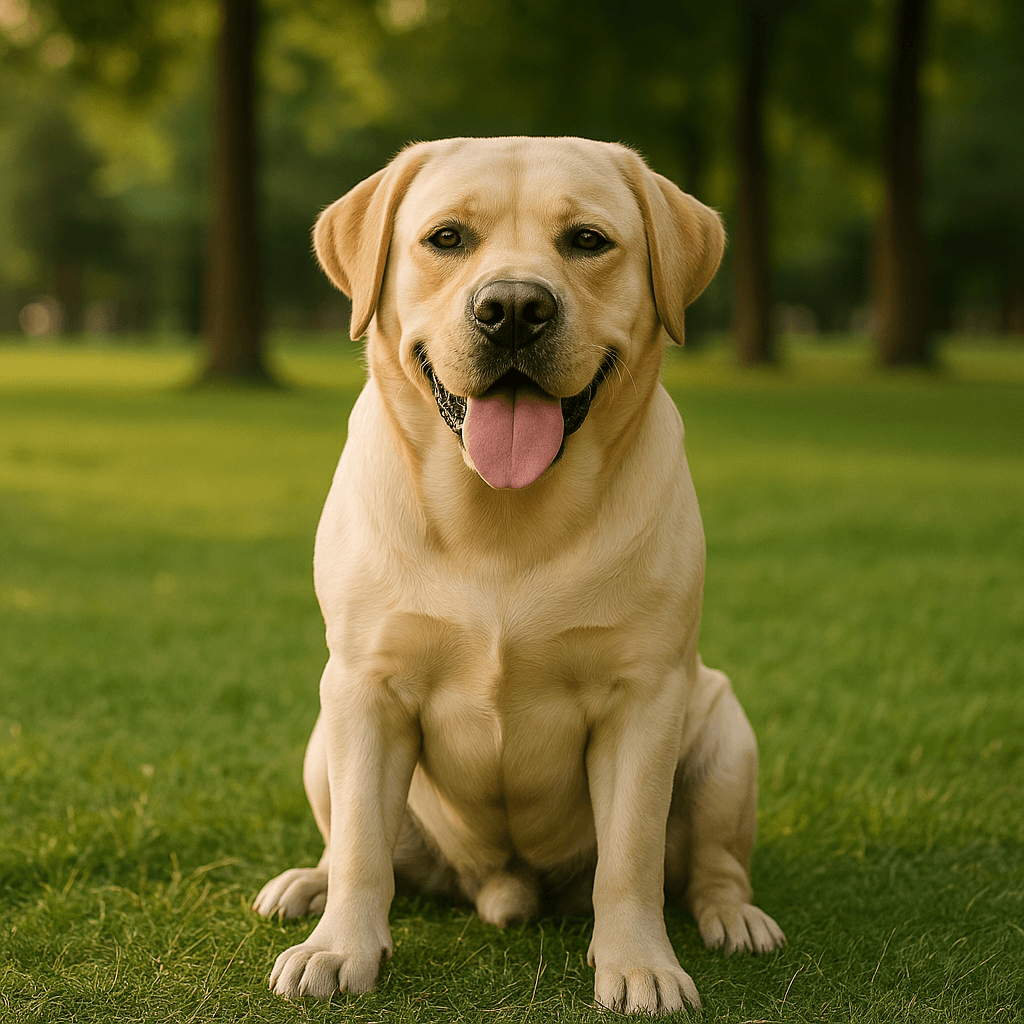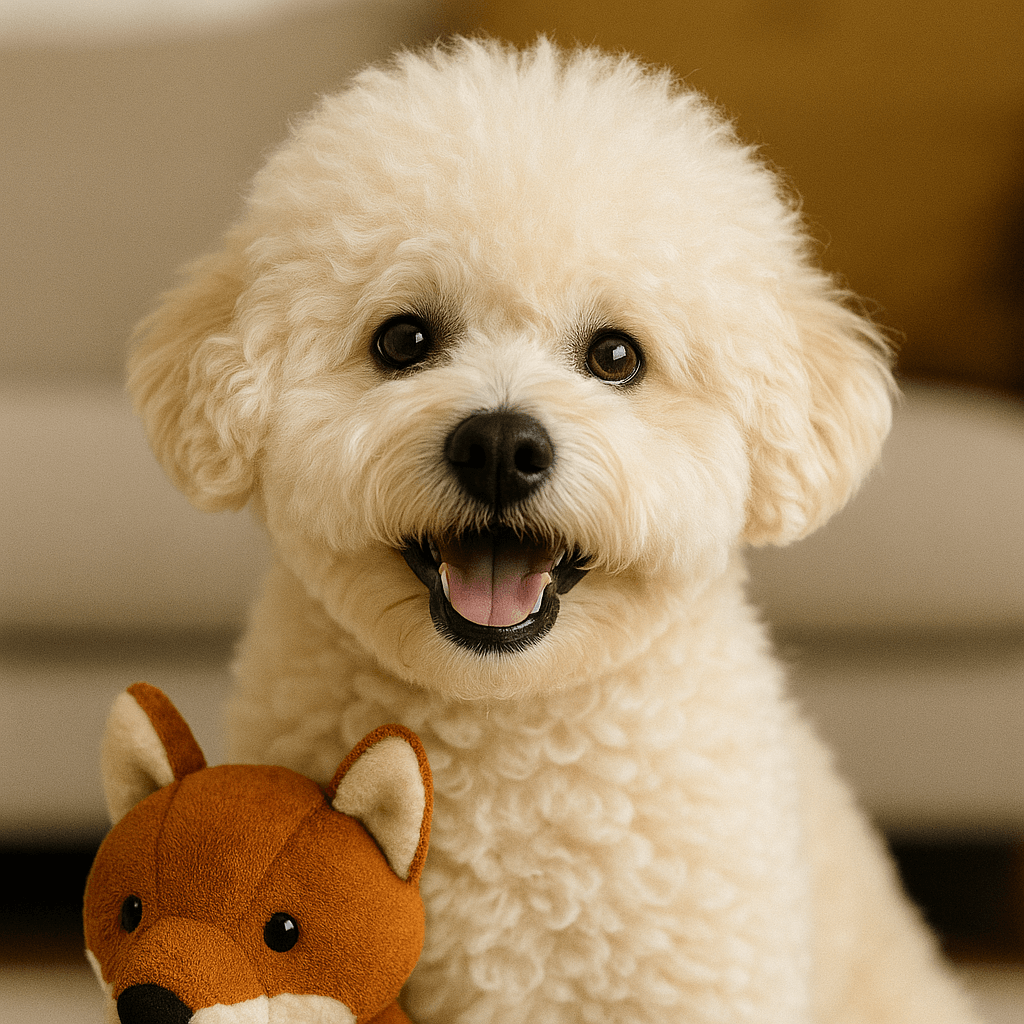
Labrador Retriever – An Intelligent and Faithful Family Friend
The Labrador Retriever is one of the most popular dog breeds in the world. Beloved for its gentleness, intelligence, and loyalty, the Labrador is an excellent family companion, an active playmate, and an indispensable assistant in working with humans.
In this article, we'll take a closer look at the breed's characteristics, origins, care, health, and nutritional and activity needs. You'll find all the essential information about this incredibly popular breed—from its history to daily care.
Contents
- The history and origin of the Labrador Retriever breed
- Appearance and color
- Character and temperament
- Who is the Labrador Retriever for?
- Labrador care and hygiene
- Health and prevention
- Labrador nutrition and diet
- Labrador on the go
- FAQ – Frequently Asked Questions
- Summary and useful links
The history and origin of the Labrador Retriever breed
The Labrador Retriever, also known simply as "Labrador," hails from the northeastern coast of Canada, specifically Newfoundland. The breed's origins date back to the 18th century, when local fishermen used St. John's dogs to help pull their nets from the icy waters of the Atlantic.
These were hardy, hard-working dogs with short, dense coats and a unique fondness for water. British aristocrats, impressed by the working abilities and obedience of these dogs, began importing them to England. It was there, in the early 19th century, that the planned breeding of the breed known today as the Labrador Retriever began.
The name "Labrador" likely comes from the Labrador Strait or the Labrador Peninsula, a reference to the dogs' Canadian origins. Labradors were bred as retrieving dogs—hence the "retriever" part of their name. Their natural reflex to retrieve, soft jaw grip, and exceptionally strong water instinct made them ideal companions for waterfowl hunting.
Today, they are still used as hunting dogs, but also as guide dogs for the blind, rescue dogs, police dogs, and therapy dogs. The breed was officially recognized by the British Kennel Club in 1903 and by the American Kennel Club in 1917. Since then, the Labrador's popularity has steadily grown—both as a working dog and as a family companion.
📘 See more on the American Kennel Club website – Labrador Retriever .
Appearance and color
The Labrador Retriever is a medium-sized dog with an athletic build. Its silhouette combines strength, endurance, and elegance, making it not only an effective field worker but also a charming family pet.

Physique
Males typically stand 56-61 cm at the shoulder and weigh 29-36 kg. Females are slightly smaller, measuring 53-58 cm and weighing 25-32 kg. The Labrador has a strong chest, well-developed muscles, a straight back, and strong limbs. The tail, characteristic of the breed, is thick at the base, gradually tapering, and resembles an otter's tail, aiding the dog in swimming.
Head and eyes
The Labrador's head is proportionate to the body, with a broad skull and moderately pronounced stops. The eyes are brown or hazel, expressing intelligence and a gentle nature. The ears are medium-sized, slightly drooping, and set close to the skull.
Coat and color
The Labrador has a short, dense, hard-to-touch coat with a water-resistant undercoat. This coat allows the Labrador to withstand cold and humidity well. The coat requires regular brushing, especially during shedding seasons. The FCI standard recognizes three basic colors:
- black ,
- yellow (from light cream to reddish),
- chocolate (brown).
Some individuals may have a small white patch on the chest, which is tolerated in breeding. The coat color does not affect the dog's personality, although certain colors may be more popular in a given region or breeding environment.
Character and temperament
The Labrador Retriever is a dog with an exceptionally friendly and even-tempered personality. It's gentle, loyal, and very sociable. This breed was created to work well with humans—a trait reflected in both everyday life and at work.
A companion with a heart of gold
Labradors are known for their patience and friendliness towards people—both adults and children. This makes them excellent family dogs. They enjoy being close to family and participating in every activity.
Intelligence and ease of training
One of the most intelligent dog breeds, the Labrador quickly learns new commands and rules. It responds well to positive reinforcement and requires clear, consistent rules. This makes it an excellent guide dog, rescue dog, police dog, and therapy dog.
High energy level
Labrador retrievers need plenty of exercise and mental stimulation. Boredom can lead to destructive behavior, so daily walks, games of fetch, training, and interactive toys are an absolute must.
Social nature
This dog doesn't handle loneliness well. Left alone for long hours, it can become frustrated. Therefore, the Labrador feels most comfortable in a home where someone is present most of the day. The Labrador's personality is a combination of strength, empathy, devotion, and a zest for life—traits that make it one of the most beloved dogs in the world.
Who is the Labrador Retriever for?
The Labrador Retriever is a versatile breed, yet demanding in its commitment. While its gentle temperament allows it to thrive in almost any environment, there are specific lifestyle traits that make this dog truly thrive.
The perfect family dog
The Labrador loves children and thrives in a noisy, lively home. He's patient, gentle, and active—he can spend hours playing in the yard or accompanying the family on outings.
A great choice for active people
People who lead an active lifestyle—runners, cyclists, and those who enjoy long walks—will surely find the Labrador to be the perfect companion. This dog loves exercise and will happily accompany you every day.
A companion for single people and seniors (but with reservations)
While a Labrador can be a great companion for an elderly or lonely person, it's important to remember that their need for exercise and mental stimulation requires time and energy. In such cases, hiring a dog walker or having family help is recommended.
Not recommended for busy people
If you spend most of your day away from home and your dog will be left alone for long hours, a Labrador may not be the best choice. Their emotional need for human contact and high energy levels can lead to frustration and behavioral problems.
The Labrador Retriever is a loyal, sensitive and intelligent dog that will give you its whole heart – provided it receives the attention, time and care it deserves in return.
Labrador care and hygiene
Although the Labrador Retriever does not require as intensive care as long-haired dogs, maintaining its fur and skin health requires systematic use and the right tools.
Combing and shedding
Labrador sheds heavily, especially twice a year – in spring and autumn. Brushing your Labrador daily, or at least several times a week, with a slicker or currycomb will help reduce shedding and improve skin circulation.
Baths
It's not recommended to bathe your Labrador too often – once every 6–8 weeks, or whenever they get really dirty (e.g., after a muddy walk), is sufficient. Use shampoos designed for dogs with short, thick fur and a neutral pH.
Ear care
Labrador retrievers have floppy ears that restrict airflow, making them more susceptible to bacterial and yeast infections. Ears should be checked at least once a week and cleaned with a special ear care solution.
Claws and paws
Nails should be trimmed every few weeks if your dog doesn't wear them down on hard surfaces. It's also worth checking the pads of their paws, especially in winter, as they may crack and need moisturizing.
Dental hygiene
Regular toothbrushing – ideally 2-3 times a week – prevents tartar buildup and periodontal disease. Dental chews or dental gels can also be used. Grooming a Labrador isn't complicated, but it does require regularity. Taking care of your Labrador's appearance and health isn't just a responsibility – it's also an opportunity to strengthen your bond with your pet.
Health and prevention
The Labrador Retriever is generally a healthy breed, but like any other, it has a predisposition to certain health conditions. The key to maintaining its health is preventative care, a proper diet, physical activity, and regular vet visits.
The most common health problems in Labrador Retrievers
- Hip and elbow dysplasia – genetically determined conditions that can lead to pain and limited movement.
- Obesity – Labrador dogs are prone to being overweight, which can lead to joint and metabolic problems.
- Eye diseases – including progressive retinal atrophy (PRA), cataracts and corneal dystrophy.
- Skin allergies – manifesting as itching, dandruff or hair loss.
- Middle and outer ear problems – common in dogs with droopy ears.
Regular prevention
- Vaccinations and deworming – according to the veterinary schedule.
- Blood and urine tests – once a year (more often in seniors).
- Dental checkups – at least once a year.
- Exercise and body weight – daily activity and a balanced diet are the best prevention.
Life expectancy
A Labrador has an average lifespan of 10 to 14 years. Lifespan depends largely on the dog's health, nutritional quality, and lifestyle. Caring for a Labrador's health isn't limited to reacting to problems, but actively preventing them—which translates into a long and happy life with its owner.
Labrador nutrition and diet
A well-balanced diet is essential for the physical and mental health of a Labrador Retriever. As an active dog prone to weight gain, it needs food tailored to its age, weight, activity level, and potential health issues.
Type of food
- Dry food for large breeds – contains optimal levels of protein, fat, and fiber. It should support joints, heart, and metabolism.
- Wet food – can be fed as a replacement or as a supplement for added palatability. Useful for seniors and dogs with chewing problems.
- Functional or veterinary foods – used for allergies, overweight, diabetes or digestive system diseases.
Feeding frequency
- Puppies (up to 6 months) – 3–4 times a day.
- Adult dogs (1–7 years) – 2 meals per day.
- Seniors (over 8 years old) – 2 light meals, preferably in smaller portions.
Treats and supplements
- Training treats, but low in calories.
- Dental chews that support oral health.
- Supplements supporting joints (glucosamine, chondroitin), coat (omega-3, biotin) and immunity.
What to avoid?
- Spicy and fatty foods.
- Table scraps – especially onions, chocolate, grapes and dairy products.
- Excess carbohydrates and grains in the food.
Proper nutrition for your Labrador helps keep him in excellent condition, minimizes the risk of metabolic diseases and supports a long, active life.
Labrador on the go
The Labrador Retriever is an excellent companion not only at home but also on the go. Its balanced nature and flexibility make it suitable for both short car rides and longer trips.
Safety in the car
When traveling by car, a Labrador should be secured in a carrier or a dog car seat, or secured with a special seat belt attached to the harness. It is not recommended to transport the dog loose – this is dangerous for both the dog and the driver.
📌 Check out PETTO beds for large dogs – comfort and healthy sleep regardless of the age and needs of your Labrador.
📚 Read also:
- How to choose the right size dog bed – a practical guide
- Is Your Dog Pulling on the Leash? Learn the Solutions
Regular stops
On long journeys, breaks are necessary every 2-3 hours to allow your dog to drink, relieve itself, and exercise. Always carry water and collapsible bowls.
Comfort and familiar scents
To reduce travel stress, it's worth bringing a favorite blanket, toy, or pillow from home. Smells familiar to your dog are soothing and help them relax.
Public transport and hotels
With proper training, a Labrador can easily travel on public transport. It's worth checking the regulations of carriers and hotels beforehand – not all places accept large breed dogs. A Labrador well-prepared for travel will be calm, relaxed, and ready to explore new places with its owner.
FAQ – Frequently Asked Questions
Is a Labrador Retriever suitable for a beginner owner?
Yes, provided the new owner is willing to engage in plenty of activity, consistent training, and dedicate time to daily care. The Labrador is a friendly and cooperative dog, but it does need stimulation.
How much exercise does a Labrador need?
At least 1.5–2 hours of physical activity per day – in the form of walks, games, swimming, or running. Additionally, it's a good idea to provide interactive toys that stimulate their minds.
How long does a Labrador Retriever live?
The average lifespan is 10–14 years. Proper diet, exercise, and preventative health care have a huge impact on a dog's length and quality of life.
Does a Labrador shed hair?
Yes, Labrador retrievers shed year-round, but especially heavily in spring and fall. Regular brushing helps reduce the amount of fur in your home.
Can a Labrador live in an apartment building?
Yes, as long as they get enough outdoor exercise. Labrador dogs can handle apartment life well, but they're not suited to being cooped up for hours without exercise.
Summary and useful links
The Labrador Retriever is an exceptional family dog – intelligent, energetic, and devoted to its owner. Although it requires commitment, adequate exercise, and care, it rewards them with boundless loyalty and affection. This breed is ideal for active individuals, families with children, and anyone seeking a companion for everyday life.
Most important recommendations:
- 🐾 PETTO beds for large dogs – comfort for your Labrador
- 📘 American Kennel Club – Labrador Retriever
- 📗 The Kennel Club UK – Labrador Retriever
With a Labrador, every day becomes an adventure – and his heart beats to the rhythm of your life.
See more at: Petto.com.pl


































 https://petto.com.pl
https://petto.com.pl